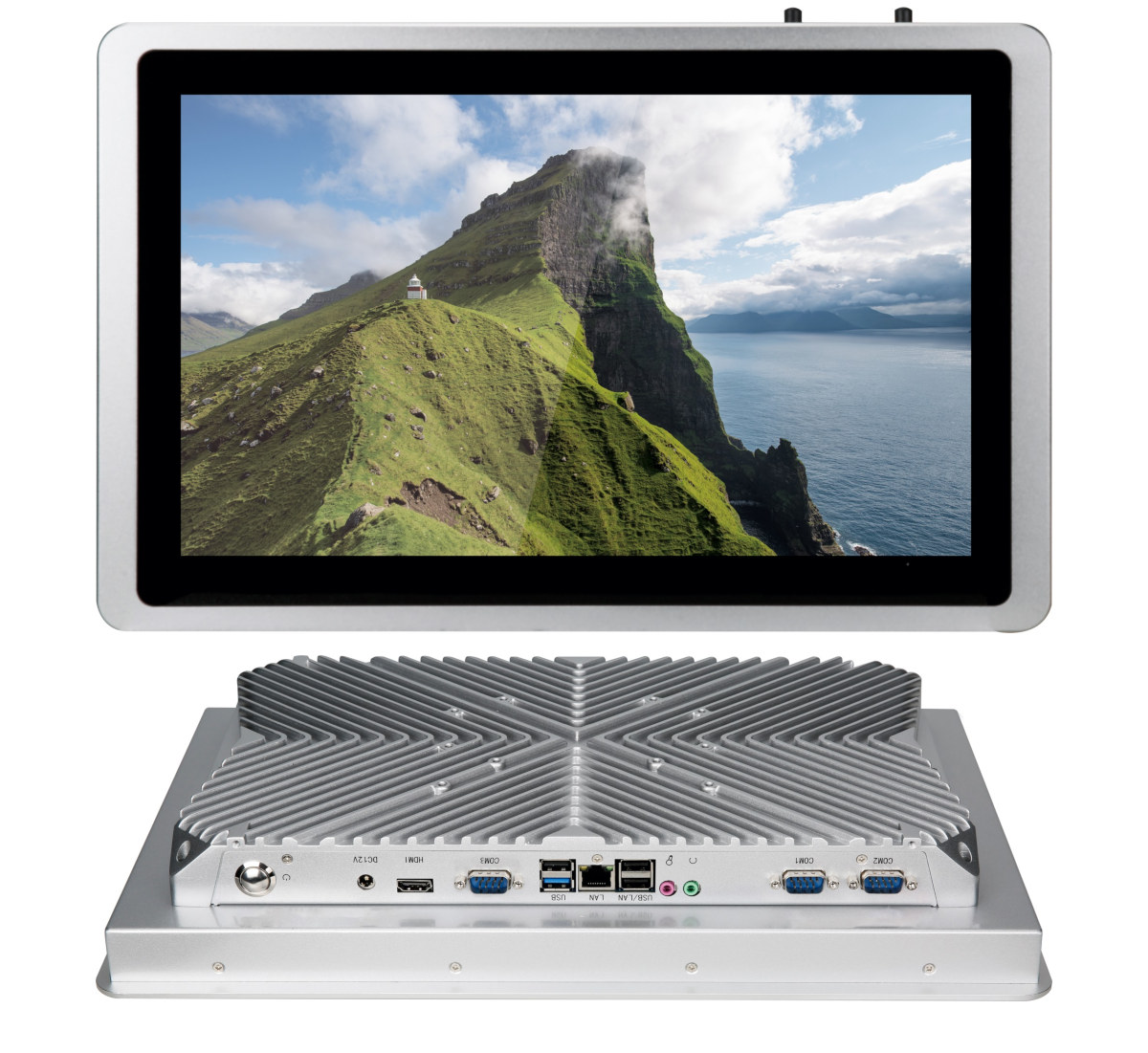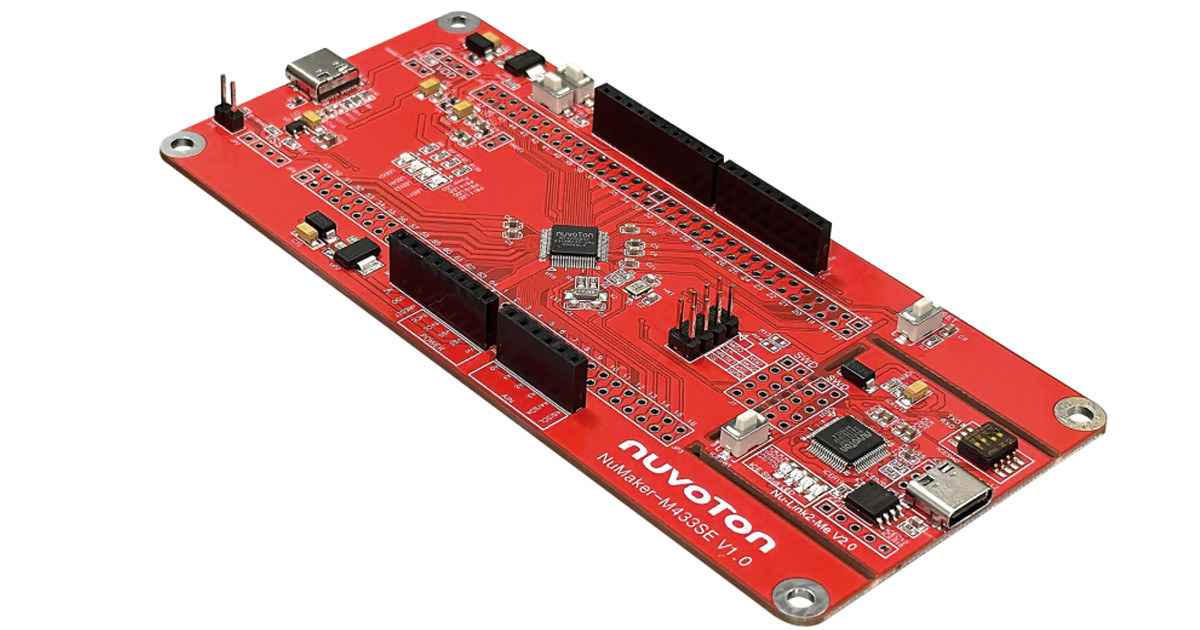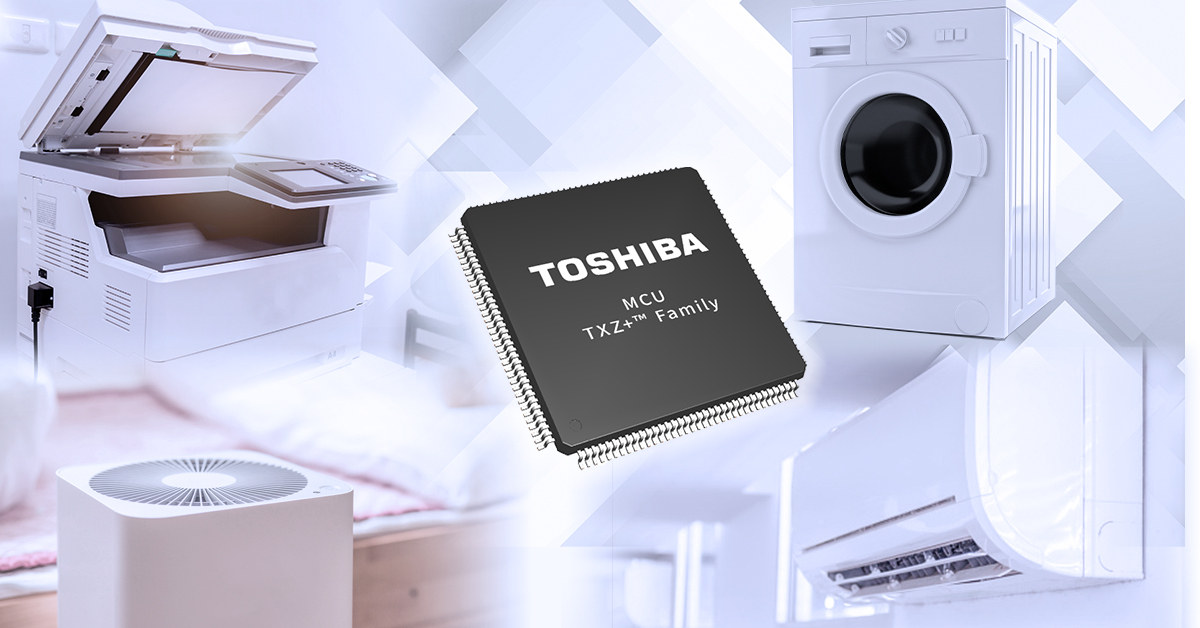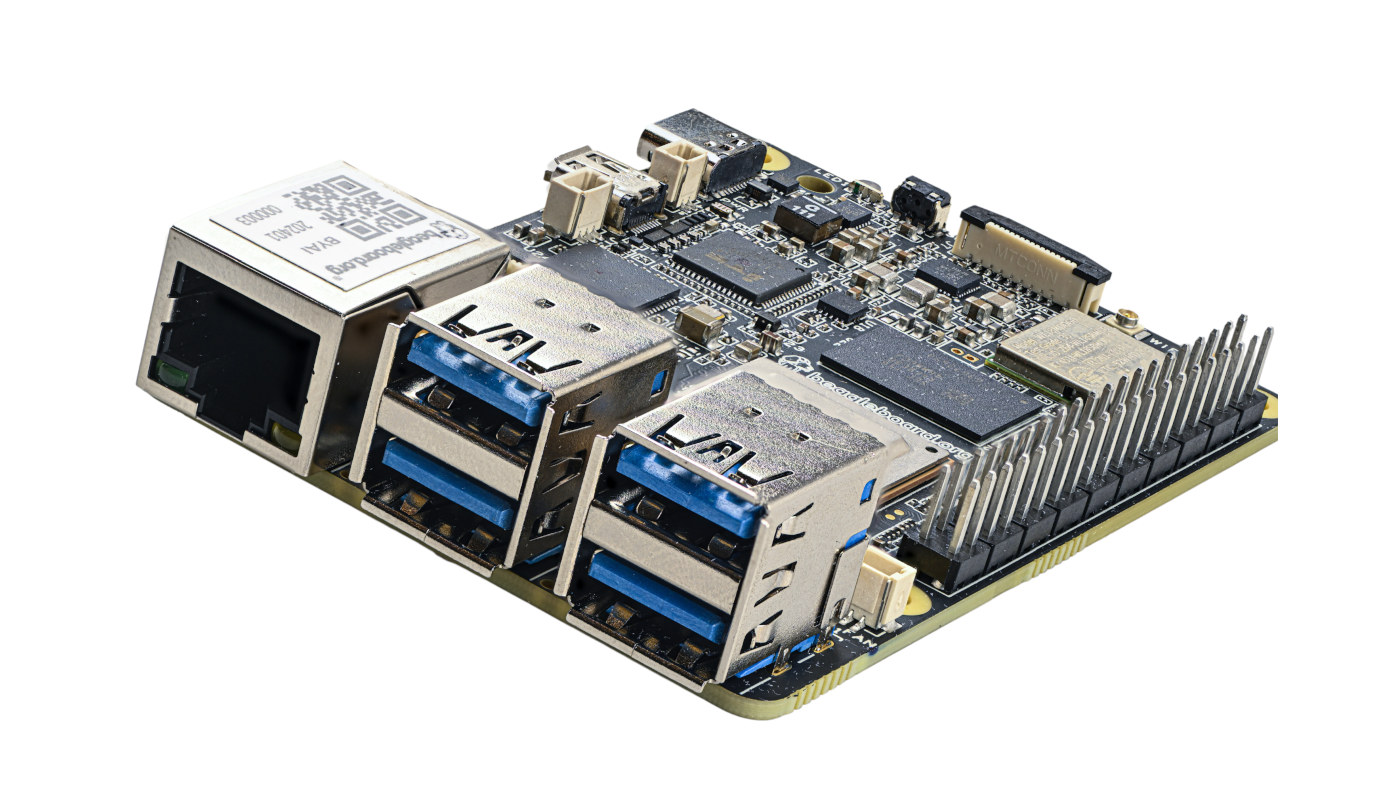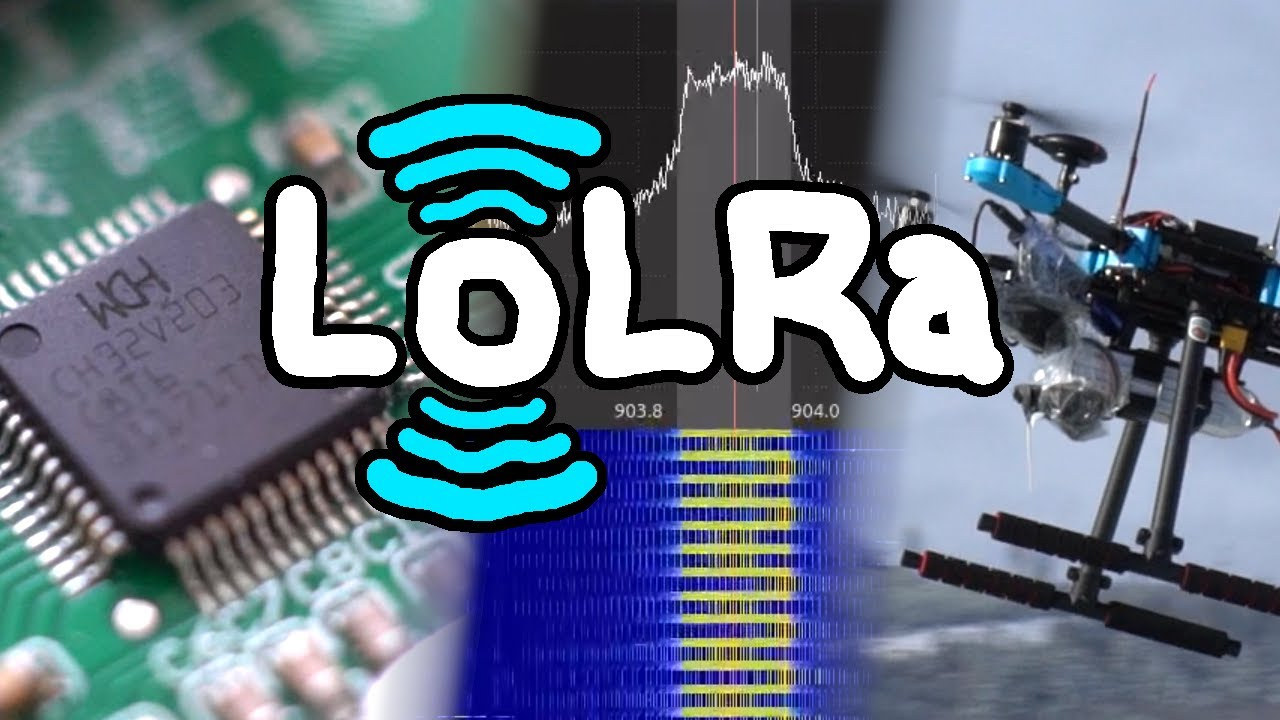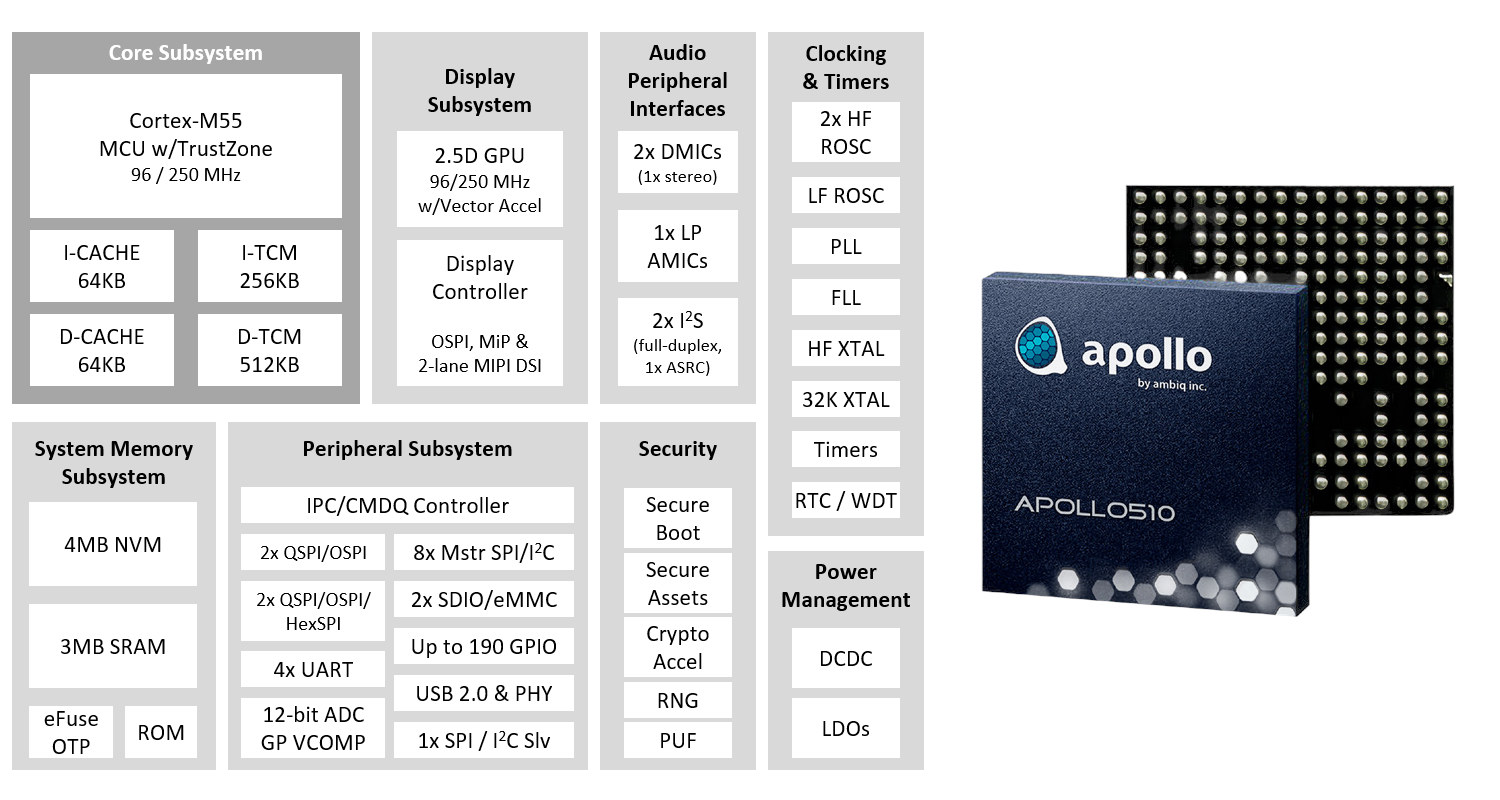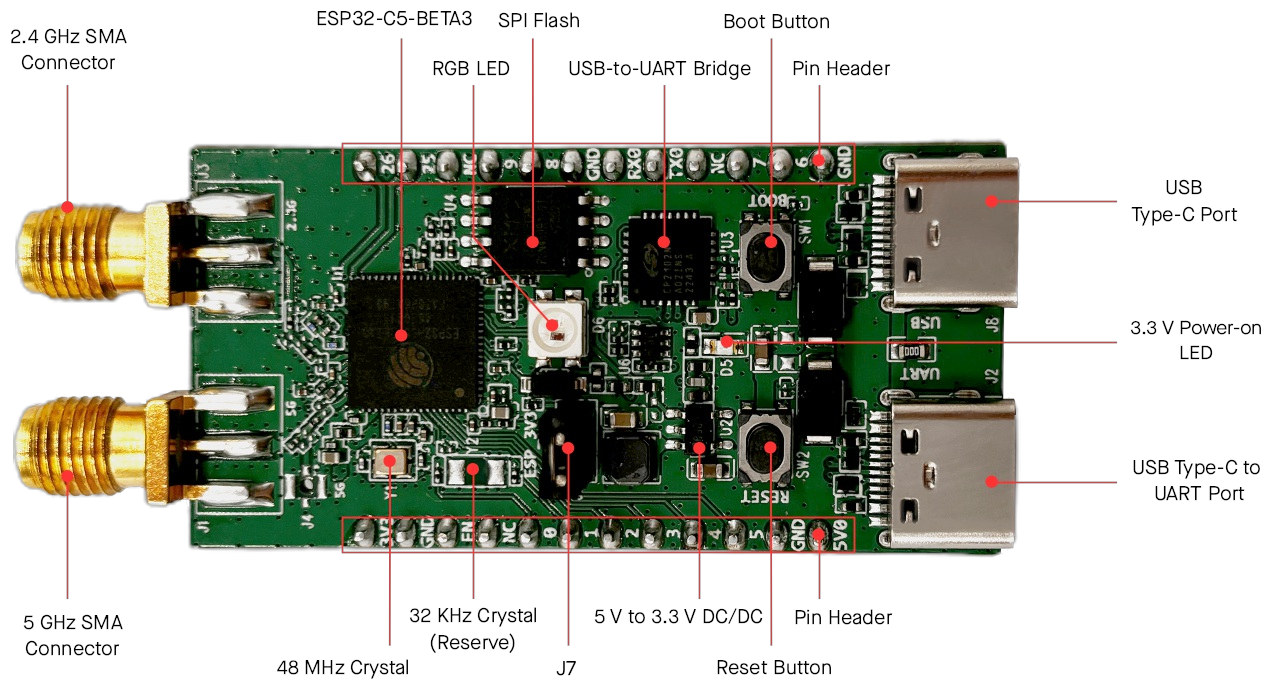EDATEC ED-HMI2320-156C is a fanless panel PC powered by a Raspberry Pi CM4 module with 15.6-inch capacitive touchscreen display and a metal enclosure ensuring cooling that’s built upon the previous Compute Module 4 smart displays from the company such as the 10.1-inch EDATEC ED-HMI2020-101C industrial panel PC and the ED-HMI2120-101C adding features such as 4G LTE, RS232 and RS485, M.2 NVMe SSD. The company’s latest HMI solution comes with two mSATA sockets, a 4K-capable HDMI 2.1 output port, two Gigabit Ethernet ports, optional WiFi 5, Bluetooth 5, and 4G LTE connectivity, as well as a few USB ports and DB9 serial ports. It can operate in the -25°C to +60°C temperature range and takes 9V to 36V DC input. EDATEC ED-HMI2320-156C specifications: System-on-Module (SoM) – Raspberry Pi CM4 SoC – Broadcom BCM2711 CPU – Quad-core Cortex-A72 processor @ 1.5GHz GPU – VideoCore VI conformant with OpenGL ES 3.1 & Vulkan […]
Nuvoton launches M433 Series ultra-low power Arm Cortex-M4F MCUs, NuMaker-M433SE development board
Nuvoton has recently announced their M433 Series MCUs (M433LE8AE and M433SE8AE) along with the NuMaker-M433SE development board. Nuvoton is calling this the “M433 CAN/USB FS OTG” Series, featuring an Arm Cortex-M4F core with DSP and FPU extensions. The MCU is clocked at 144 MHz and consumes 350 nA in deep power-down mode, making it ideal for battery-operated IoT, industrial, and consumer applications. This is not the first Nuvoton MCU we have written about. In recent months, we have seen Nuvoton release the NuMicro M091 Series, the Nuvoton MA35H0 – a cost-optimized MPU, and other dev boards and MCUs. Feel free to check those out if you are interested in the topic. Nuvoton M433 Series MCUs specifications: MCU core 144 MHz Arm Cortex-M4F Includes DSP and FPU instructions Memory Protection Unit (MPU) with 8 regions Memory Up to 128 KB Flash 4 KB LDROM Up to 64 KB SRAM with parity […]
Orange Pi Developer Conference 2024, upcoming Orange Pi SBCs and products
Orange Pi held a Developer Conference on March 24, 2024, in Shenzhen, China, and while I could not make it, the company provided photos of the event where people discussed upcoming boards and products, as well as software support for the Orange Pi SBCs. So I’ll go through some of the photos to check out what was discussed and what’s coming. While Orange Pi is mostly known for its development boards the company has also been working on consumer products including the Orange Health Watch D Pro and the OrangePi Neo handheld console. The Orange Pi Watch D Pro is said to implement non-invasive blood glucose monitoring, blood pressure monitoring, one-click “micro-physical examination” and other functions to to help users monitor their health monitoring. The Watch D Pro uses a technique that emits a green light to measure glucose levels in the blood, and we’re told it’s accurate enough to […]
Toshiba M4K Group microcontrollers for motor control get expanded flash & memory capacity
Toshiba has included eight new products with 512KB/1MB flash storage capacity and four packages in its M4K Group of Arm Cortex-M4-powered microcontrollers. The M4K Group is part of Toshiba’s TXZ+ Family Advanced Class, consisting of five groups of low-power, high-performance 32-bit microcontrollers. The new microcontrollers expand code flash memory to 512KB/1MB from the 256KB maximum supported by current products, and RAM capacity to 64KB from 24KB. They retain the Arm Cortex-M4 core, integrated code flash, and 32KB data flash memory (with 100K program/erase cycles). With different motor control options such as advanced programmable motor circuits, advanced 32-bit encoders, advanced vector engine plus, and three units of high-speed, high-resolution 12-bit analog/digital converters, these class of microcontrollers are quite capable of 3-motor control, even in small scale applications (64-pin). The new products with 1MB code flash separate the memory into two distinct 512KB areas, enabling memory swap and seamless over-the-air firmware updates, […]
BeagleY-AI SBC features TI AM67A vision processor with 4 TOPS AI accelerators
The BeagleBoard.org Foundation’s BeagleY-AI is an open-source hardware, credit card-sized SBC powered by a Texas Instruments AM67A quad-core Cortex-A53 vision processor with various programmable blocks capable of delivering up to 4 TOPS for AI algorithms. The board ships with 4GB RAM, relies on a microSD card slot for storage and OS booting, implements gigabit Ethernet, WiFi 6, and Bluetooth 5.4 connectivity, and can drive up to three displays via micro HDMI, OLDI (LVDS), and MIPI DSI interfaces. The BeagleY-AI also comes with two MIPI CSI camera interfaces, four USB 3.0 ports, a USB Type-C port, and a 40-pin GPIO header for expansion. We can also see a 16-pin PCIe FPC connector that looks somewhat similar to the 20-pin PCIe connector on the Raspberry Pi 5 but officially supports PCIe Gen3 x1. BeagleY-AI specifications: SoC – Texas Instruments AM67A (J722S) “vision processor” CPU Quad-core 64-bit Arm Cortex-A53 processor at 1.4GHz Arm […]
LoLRa project – Transmitting LoRa packets without radio using CH32V003, ESP8266, or ESP32-S2 MCU
The LoLRa project is a firmware-only LoRa transmission open-source project that works without a Semtech radio and instead relies on an I2S or SPI interface (so not exactly bit-banging) to transmit data with microcontrollers such as WCH CH32V003, or Espressif Systems ESP8266 and ESP32-S2 microcontrollers. LoRa is a proprietary protocol by Semtech, but people have been trying to reverse-engineer the LoRa PHY for years, and this culminated with a LoRa GNU Radio SDR implementation last year. But CNLohr found out you don’t even need a radio to send LoRa packets and you can instead use SPI or I2S interfaces from general-purpose microcontrollers to send packets that can be decoded by commercial off-the-shelf LoRa gateways and other chips. The current implementation is designed for the ITU Region 2 (aka The Americas) targeting the 902-928MHz frequency band, but the code could be changed for Region 1 (EU, Russia, Africa) to target 863-870MHz […]
Ambiq Apollo510 Arm Cortex-M55 MCU delivers up to 30x better power efficiency for AI/ML workloads
Ambiq Apollo510 Arm Cortex-M55 microcontroller delivers 30 times better power efficiency than typical Cortex-M4 designs and 10 times the performance of the Apollo4 Cortex-M4 sub-threshold microcontroller for AI and ML workloads. The new MCU also comes with 4MB NVM, 3.75MB SRAM, a 2.5D GPU with vector graphics acceleration that’s 3.5 times faster than the Apollo4 Plus, and support for low-power Memory-in-Pixel (MiP) displays. Like all other Ambiq microcontrollers, the Apollo510 operates at sub-threshold voltage for ultra-low power consumption and implements security with the company’s secureSPOT platform with Arm TrustZone technology. Ambiq Apollo510 specifications: MCU Core – Arm Cortex-M55 core up to 250 MHz with Arm Helium MVE, Arm TrustZone, FPU, MPU, 64KB I-cache, 64KB D-cache, 256KB I-TCM (Tighly Coupled Memory), 256KB D-TCM, Graphics – 2.5D GPU clocked at 96 MHz or 250 MHz with vector graphics acceleration, anti-aliasing hardware acceleration, rasterizer/full alpha blending/texture mapping, texture/framebuffer compression (TSC4, 6, 6A and […]
ESP32-C5 beta board features 2.4GHz and 5GHz SMA antenna connectors, two USB-C ports
Espressif ESP32-C5 microcontroller was announced in June 2022 as the first dual-band WiFi 6 IoT chip from the company. It’s been quiet since then, but things are about to change as the ESP32-C5 beta board’s documentation has very recently been released. The ESP32-C5 was initially announced as a dual-band WiFI 6 and Bluetooth 5.0 LE SoC, but the user manual for the beta board indicates that it also supports Zigbee 3.0 and Thread 1.3, so there’s an 802.15.4 in the wireless microcontroller. The ESP32-C5 board itself features two SMA connectors for 2.4 GHz and 5GHz antennas or test equipment, two USB-C ports, two 12-pin GPIO header, Boot and Reset buttons, an RGB LED, and a 2-pin header for current measurements. ESP32-C5 beta board specifications: SoC – ESP32-C5-BETA3 CPU – Single-core 32-bit RISC-V processor @ up to 240 MHz Memory – 400KB SRAM on-chip Storage – 384KB of ROM on-chip, support […]


